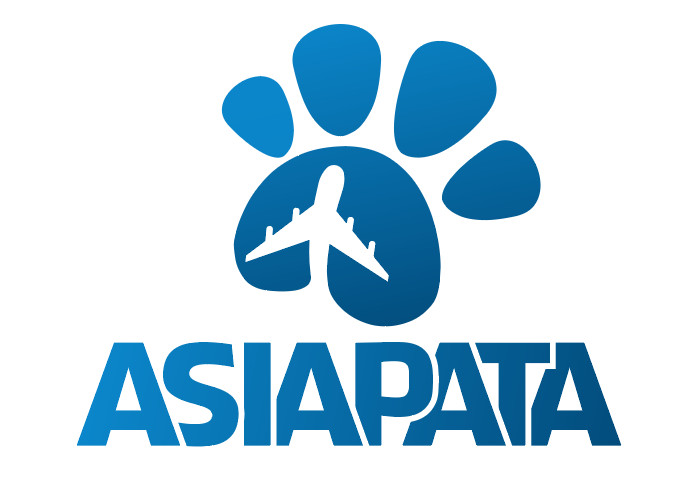Distinguishing “Pet in Cabin,” “Checked Baggage,” and “Cargo” for Air Travel
Traveling with pets can be exciting yet stressful. You want your furry friend safe and comfortable. Airlines offer three main options. These are pet in cabin, checked baggage, and cargo. Each has unique rules and benefits. Understanding them helps you choose wisely. This guide breaks it down clearly. You’ll learn pros, cons, and tips. Say goodbye to confusion. Hello to smooth journeys with your pet.

What is Pet in Cabin?
Pet in cabin means your pet flies right beside you. They stay inside a carrier under the seat. This option suits small pets only. Think cats or tiny dogs under eight kilograms. The carrier counts as your hand luggage. You must book ahead. Airlines limit spots per flight. Your pet avoids the noisy hold. They feel your presence nearby. No separation anxiety here. It’s ideal for short trips. Comfort levels soar high. But rules vary by airline. Check size limits first. Ensure the carrier fits IATA standards. Your pet must stay quiet too. No barking allowed mid-flight. This keeps everyone happy. Pet in cabin builds trust. It’s the closest to home.
What is Checked Baggage for Pets?
Checked baggage sends your pet to the cargo hold. You fly on the same plane though. Medium-sized pets fit this category. Dogs up to thirty kilograms work well. The pet crate goes through baggage check. You reunite at arrivals. The hold is pressurized and cool. Temperature stays between seven and twenty-nine degrees Celsius. It’s climate-controlled for safety. Staff monitor during flight. But delays can worry owners. Your pet waits with suitcases. Book early to secure space. Health certificates are a must. Vaccines and microchips too. This option links pet to your ticket. It’s simpler for families. No extra shipping fees. Yet, layovers add stress. Ensure direct flights if possible. Checked baggage balances cost and company. It’s reliable for most trips.
What is Cargo for Pets?
Cargo means your pet ships separately. They travel on the same day often. But not tied to your flight. Larger pets thrive here. Breeds over thirty kilograms qualify. Professional handlers manage everything. Dedicated cargo teams feed and check pets. Lounges at airports pamper them. Think water breaks and walks. Tracking apps keep you updated. It’s the safest for long hauls. Countries like Australia demand it. Strict rabies rules apply. Costs run higher though. Plan weeks in advance. Crates must meet strict IATA specs. Vets sign off on fitness. Cargo offers flexibility too. Choose optimal routes for pets. No rushing with your luggage. Experts handle customs. This method shines for internationals. Peace of mind follows. Cargo turns travel into adventure.
Key Differences Between the Three Options
Size rules differ sharply. Cabin takes tiny pets only. Checked baggage handles mediums. Cargo fits giants easily. Location varies too. Cabin keeps pets with you. Baggage and cargo use the hold. But baggage syncs flights. Cargo allows independence. Booking changes everything. Cabin needs early alerts. Baggage ties to tickets. Cargo books via freight pros. Costs climb steadily. Cabin fees stay low. Baggage adds moderate charges. Cargo demands premiums. Safety protocols overlap. All require IATA crates. Holds stay pressurized. Yet cargo adds handlers. Stress levels drop there. Regulations hit hard. Some nations ban cabin imports. Others mandate cargo. Airlines dictate daily. Delta loves cabin spots. United prefers cargo pros. Choose based on breed. Pugs hate heat in holds. Short-noses need vents. These differences guide smart picks. Match your pet’s needs perfectly.
Pros and Cons of Each Method
Start with cabin perks. Proximity calms nerves. Short flights feel easy. Cons include tight spaces. Big pets get left out. Noise from passengers bugs some. Checked baggage wins on cost. Same-plane comfort reassures. Drawbacks hit during delays. Crate time extends waits. Cargo excels in care. Experts watch closely. Layovers turn luxurious. But prices sting wallets. Separation tests bonds. Each shines in scenarios. Cabin for quick hops. Baggage for family jaunts. Cargo for global moves. Weigh your trip’s length. Factor pet’s temperament. Health history matters too. Pros outweigh cons when planned. Turn travel fears into tales.
Practical Tips for Pet Air Travel

Prep your pet early. Acclimate to crates now. Short sessions build confidence. Vet visits confirm fitness. Update rabies shots timely. Microchip for quick ID. Research airline policies. Call ahead for spots. Pack familiar toys inside. Blankets soothe senses. Water bottles prevent spills. For cabin, practice quiet time. Muzzle if needed gently. Baggage travelers hydrate pre-flight. Cargo owners track flights. Use apps for real-time peace. At airports, arrive hours early. Breeze through security calm. Customs forms ready helps. Post-flight, offer quiet rest. Hydrate and watch for stress. These tips smooth edges. Journeys become joyful bonds.
Safety Considerations and Regulations
Safety tops every list. Holds maintain air pressure. Temps avoid extremes always. Crates prevent escapes firmly. IATA standards protect all. Airlines train staff well. Emergency protocols save lives. Regulations enforce vaccines. EU demands blood tests. US checks health certs. Asia eyes quarantine rules. Breeds face nose restrictions. Brachycephalics fly limited. Cargo eases those burdens. Experts navigate red tape. Monitor weather delays. Heat embargoes halt flights. Cold snaps do too. Insure your pet’s trip. Coverage calms worries. Follow all to fly safe. Regulations evolve fast. Check updates before booking. Safety ensures happy landings.
Conclusion
Pet in cabin, checked baggage, cargo—each unlocks doors. Cabin cuddles close. Baggage bridges gaps. Cargo conquers distances. Pick what fits your furry pal. Plan with love and detail. Travel turns into treasured memories. Your pet deserves the skies. Book boldly today. Wings await you both.
